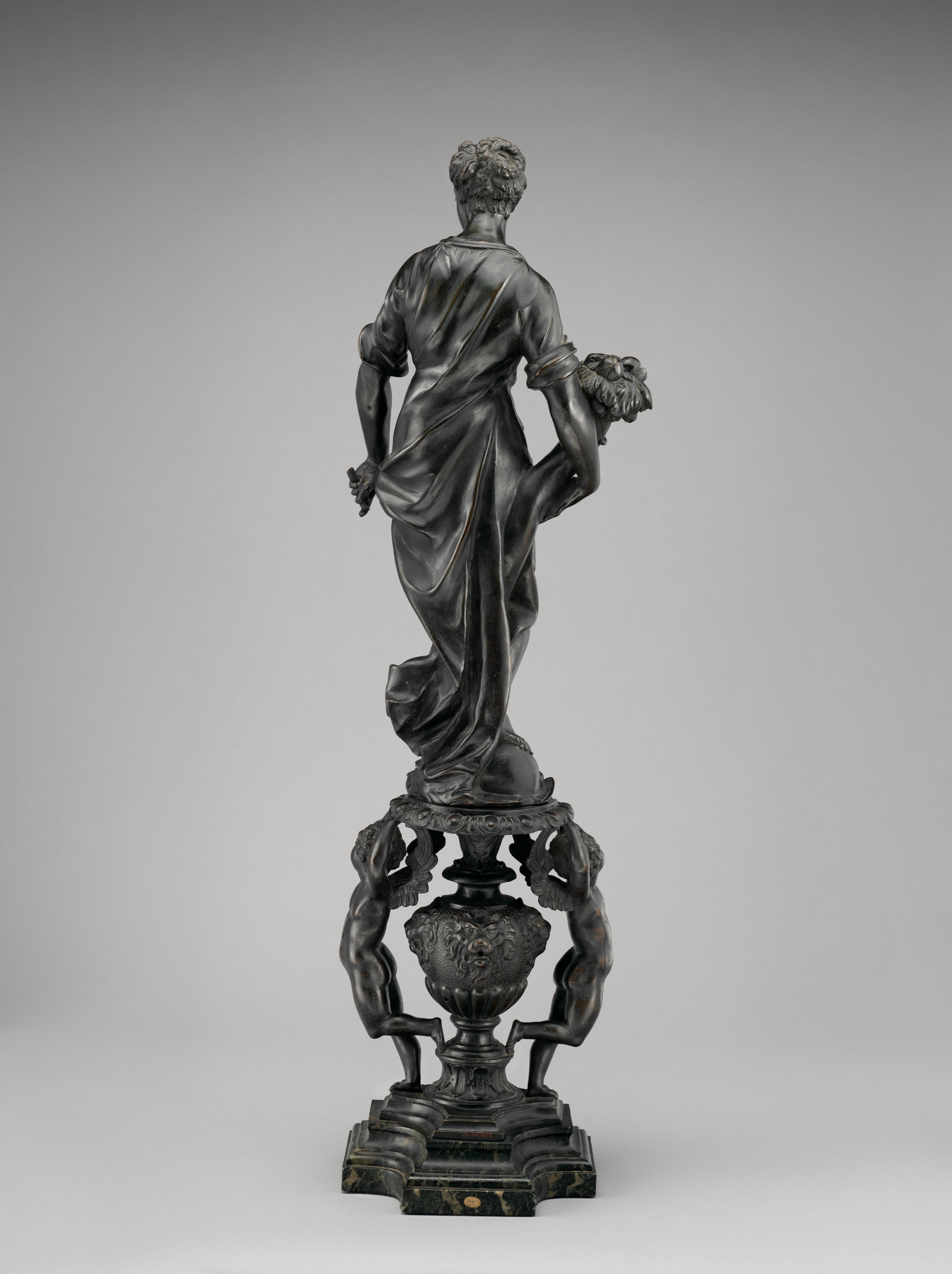Andiron with figure of Ceres (allegory of Peace) (one of a pair)
After a model by Girolamo Campagna Italian
Not on view
These bronzes were formerly components of a larger pair of andirons subsequently turned into statuettes and mounted on marble plinths. Each andiron is comprised of two main pieces, the deity and the pedestal. The Allegory of Peace is a female figure standing on a shield and helmet and cradling a cornucopia of fruit in her right arm. In the companion Allegory of War, the figure, also female, wears a helmet and holds a spear and shield; a sphinx supports an escutcheon at her feet. Both pedestals are composed of a central urn-shaped stem decorated with four lion masks atop an octagonal base, with sides alternately straight and concave. Two amorini with outstretched arms flank the urn and support the base of the deity. Only the left arm of Peace was cast separately (a fragment of an unknown object remains in the left hand). The left leg of Peace is stamped with the number “1945,” an interesting detail that cannot refer to a date, since the bronze was acquired in 1914. It might be an inventory number of the sort that a nineteenth-century dealer would have used.[1]
The models derive from Girolamo Campagna’s marble sculptures of Peace and War above the Porta al Senato in the Sala delle Quattro Porte of the Palazzo Ducale, Venice.[2] The bronzes were formerly attributed to Jacopo Sansovino, then Alessandro Vittoria on the basis of their similarity to a pair of andirons in the collection of J. Pierpont Morgan also attributed to him.[3] Given their serial and highly finished quality, our statuettes should be considered casts inspired by Campagna’s well-known compositions, not direct products of his workshop but possibly of seventeenth-century manufacture, and typical of the refined decorative output of the robust Venetian bronze industry.[4]
Footnotes
(For key to shortened references see bibliography in Allen, Italian Renaissance and Baroque Bronzes in The Metropolitan Museum of Art. NY: The Metropolitan Museum of Art, 2022.)
1. See James David Draper, letter of November 2, 1987, ESDA/OF.
2. See notes by Johanna Hecht dated 1985 in ESDA/OF. For discussion and illustrations of the marbles, see P. Rossi 1968, pp. 19, 66, pl. 6 (dating the works ca. 1589–90); and Timofiewitsch 1972, pp. 248–49, no. 8, pls. 30–33 (dating them half a decade earlier).
3. Morgan Library & Museum, New York, AZ154.1–.2. Planiscig 1921, p. 490, attributed the pair in the Morgan collection to Alessandro Vittoria, never citing The Met bronzes. It is not clear if Weihrauch 1956, p. 102 (“P. Morgan, jetzt Metropo.-Mus., New York”), was referring to the Morgan pair or ours. The presence of both pairs in New York probably generated the confusion.
4. On the production of andirons in Renaissance Venice, see Motture 2003.
Due to rights restrictions, this image cannot be enlarged, viewed at full screen, or downloaded.
This artwork is meant to be viewed from right to left. Scroll left to view more.



